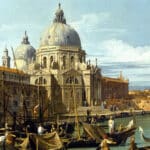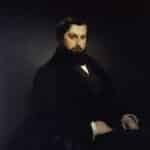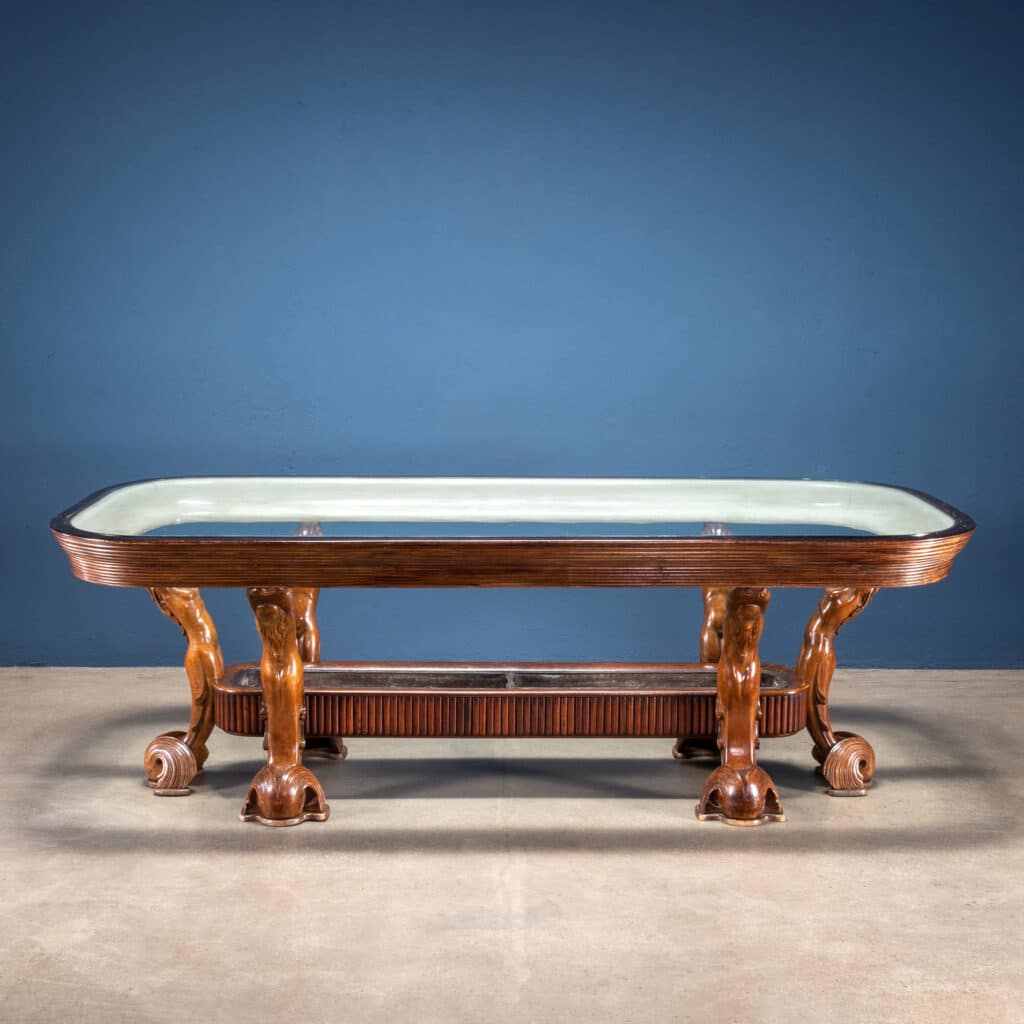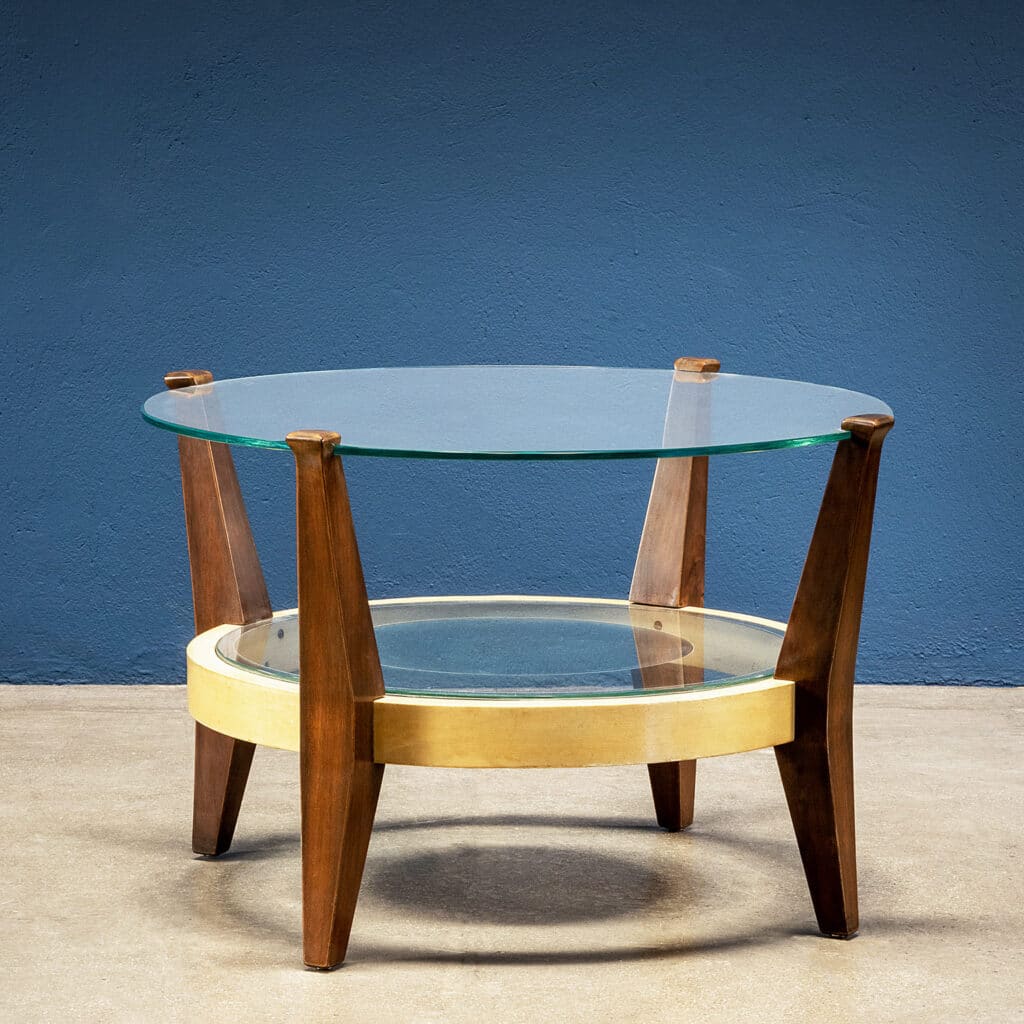Borsani Archive, heritage of memories and knowledge
On 29 October 2021 on the occasion of the ‘Grand Tour’ event, in the temporary space of Via Borgonuovo 1 in Milan, we organized an in-depth meeting on the figure of Osvaldo Borsani.
This article is the result of the precious intervention of the Architect Maurizio Romanò, archive expert and curator of the Osvaldo Borsani Historical Archive for over twenty-five years, an archive that collects all the documentation relating to the work of Osvaldo Borsani and in part also of his father Gaetano, founder of the Varedo Atelier around 1925-26.
Osvaldo Bersani was born in 1911 and began to collaborate with his father very very young, already during the years of the Lyceum and then of the Academy. His father Gaetano Borsani is neither an architect nor a designer but heir to a very advanced Brianza urbanistic tradition; he founds an enlarged artisan workshop which, however, stands out from all the examples that existed in Brianza at that time.
Gaetano Borsani in fact has some intuitions that allow him to free himself from the provincial climate and to makeover of the style furniture. One of the things he immediately understands is that one must get in touch with certain international environments: in particular he opens himself to suggestions of the German and French type in order to be able to interpret and transmit them through Italian taste.
Secondly, he is one of the first who calls a series of artists and specialized craftsmen to collaborate with the artisan workshop, not being himself a designer.
The first art director was the architect Maggioni, who began designing for him on the occasion of the first Monza Biennials; later, around the mid-1920s, Osvaldo Borsani entered the scene, inaugurating a new season in collaboration with his twin Fulgenzio, who instead takes care of the economic part of the business.
The objects on the “Grand Tour”, which are the table, the sofa with the armchairs and the coffee table, are all from 1941 but do not belong to the same environment.
“I did a series of researches and I was able to identify them with certainty because our archive keeps all the documentation of the supplies, which are about 11,000. Each supply corresponds to a customer, and by supply we mean both the person who could buy four chairs and the person who could furnish three villas: they had the same numerical dignity; on average we have 20-25 designs per supply.
Osvaldo Borsani actually designed the sofa and armchair in 1935. The design, however, remained in an experimental phase until 1941, the year in which production of this type with exposed armrests began.
What we now call ‘production’ was once simply the identification of a model that could be proposed to a certain type of public for a certain type of taste, propose it to the customer by making 4, 5, 10 copies at most to keep. in stock.
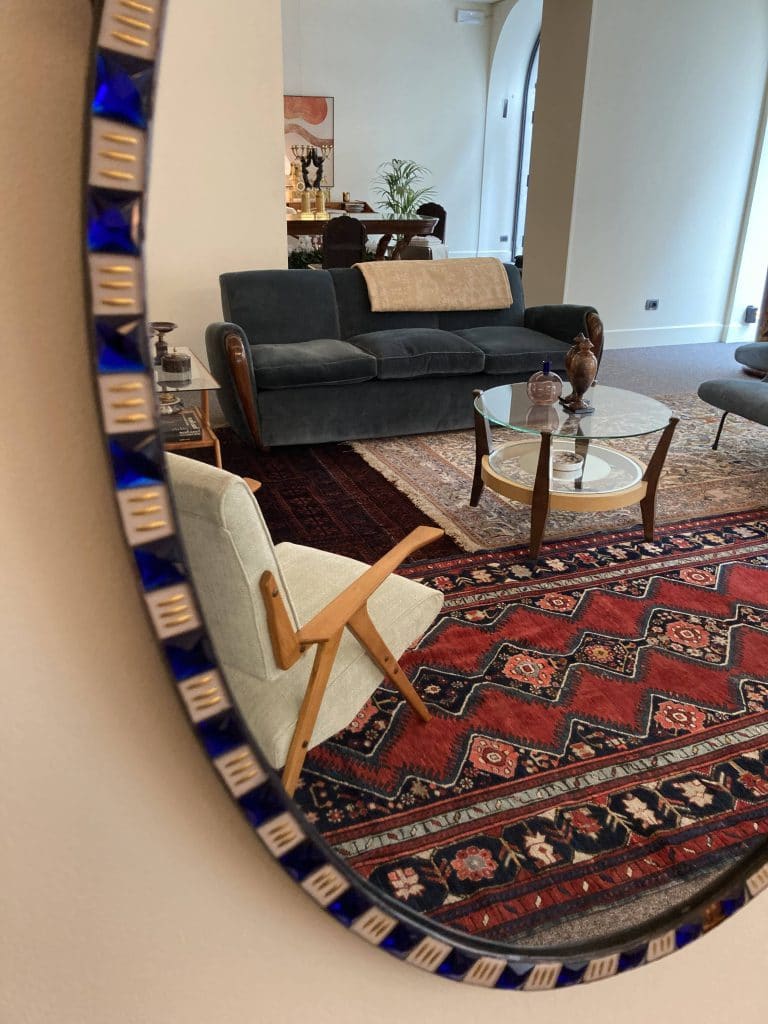
The table has a very high level cabinet making.
In 25 years I have managed to find three. Nor will he have made three or four but no more. The same goes for this coffee table, I found three, one which is this, the other is identical but there is a slightly different decorative motif.
Through small variations, based on the specific needs
of the customer and the environment in which they had to go, these pieces are in the end almost unique pieces. This choice of making certain proposals, borrowed from the father who calls artists, is successfully carried out by Osvaldo Bersani with the collaboration that inaugurates in the mid-40s with a series of artists starting with Lucio Fontana, who returns from Argentina. in 1949, and in those years he began to collaborate with Osvaldo Borsani.
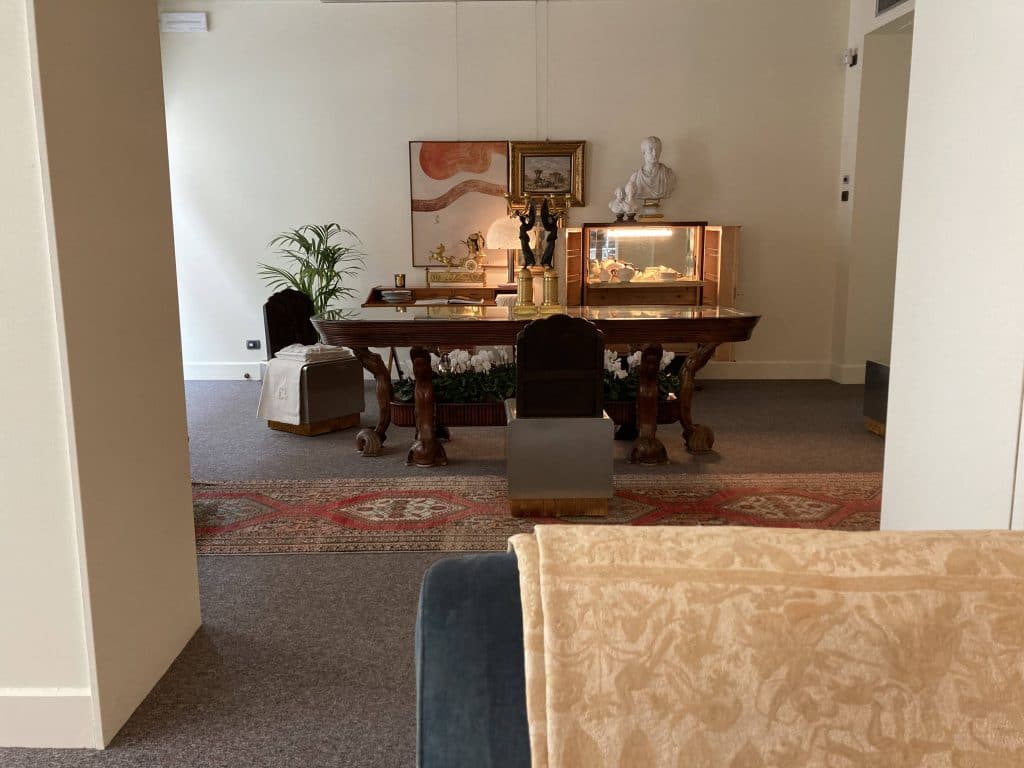
Borsani understands that the collaboration of the artists, regardless of whether or not they interested the product, constituted an added value to the piece that he was going to propose to the public.
For example, in the creation of a sideboard, the bronze handles could be designed by him (because in the company everything was designed by Borsani, from the line to the keys and hinges) or – if the customer wanted – he designed the sideboard with the handles in ceramic made by Lucio Fontana.
So the artistic element made the sideboard a unique piece and constituted, as I said before, a sort of added value to the piece.
All this continued for at least three decades, until the 1950s.
At a certain point in his existence, Borsani understands that the world is changing and that production needs to be diversified. In 1953 he therefore founded Tecno which is one of the first Italian companies to dedicate itself to the large series.
Also in this case the contact with cultural environments remains constant.
In 1950-51, for example, Enrico Mattei went to sign a contract with a Milan lawyer. On leaving he says to the lawyer:
“Nice that piece of furniture, who made it to you?”
“An architect from Brianza and I’m interested in letting you know”.
So Borsani rushes to Mattei and is so convincing that Mattei – on trust – commissions him to furnish the entire Snam building in San Giuliano Milanese. From the Snam building it passes to Eni and from Eni it passes the large orders in Iran, then it was Persia.
Again when he goes to Persia and makes great furnishings, he brings the artists to completion.
The thing that has always intrigued me is the fact that Osvaldo Borsani, despite having been in contact with the likes of Melotti, Fontana, Crippa and all the avant-garde of the 20th century, did not have a personal collection.
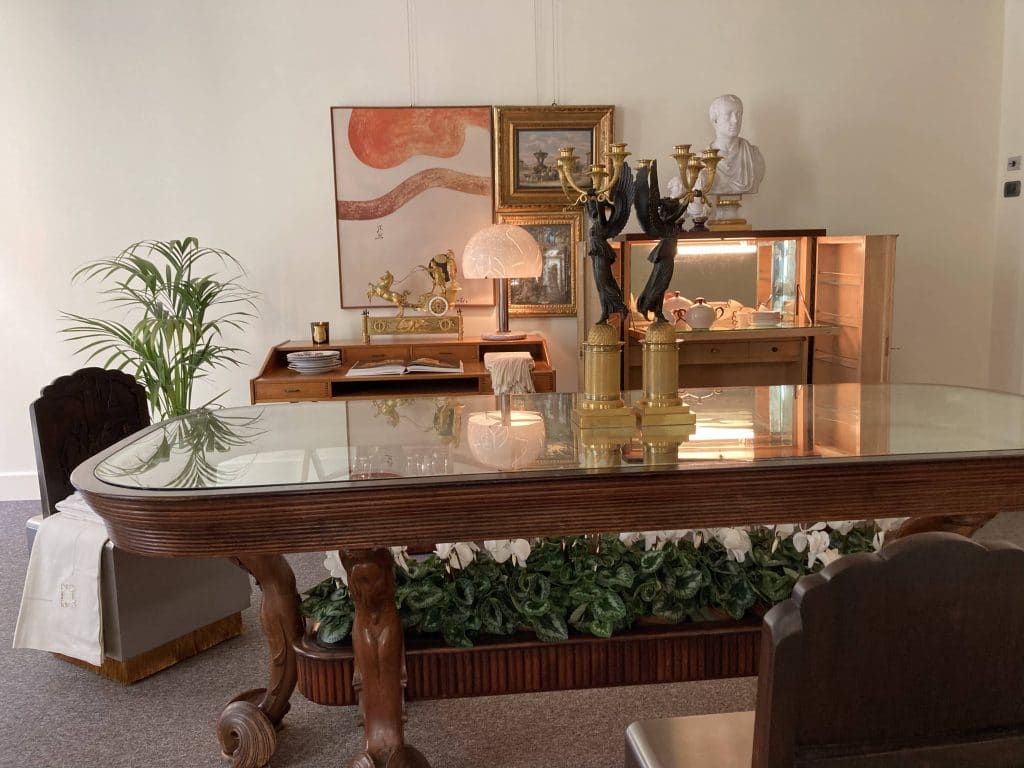
The other interesting thing is the fact that the relationship with Fontana, Crippa, the whole group from Albisola, Agenore Fabbri and Melotti, was exclusively a relationship of friendship.
So this relationship of friendship – especially in those times – did not provide for the stipulation of contracts, letters, assignments, just a handshake.
At a certain point Borsani goes, to tell the anecdote to the Island of Elba, where he has to furnish a large hotel. In the hotel there is the lobby and then there is this huge dining room where he is doing some work on the ceiling and the electricians are doing something wrong. In short, they partly ruin the ceiling. So what does he do? He picks up the phone, calls Lucio Fontana in Milan and says “hi, come down and have a week at the beach”; and Fontana, once he arrives, says: “what a disaster!”. Then he transforms these extra holes into cuts. finished, “well-good-thanks” and goes to the sea.
Since my work mainly consists in verifying whether something has been designed by Borsani or not, very often there are elements added to Borsani furniture by some artist.
Is it possible that there is no documentation? No, nothing is found.
Sometimes there is a “qui ceramica” dart in the delivery notes.
It was another world, they were other relationships and they were different people, much less formal. For what concerned the workshop, the production, and the coordinated image, it was of total precision, maniacal quadi.
In fact, there is a perfectly organized documentation.



